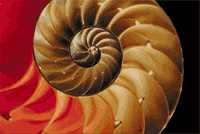|
 The molluscs or mollusks are the large and diverse phylum Mollusca, which includes a variety of familiar creatures well-known for their decorative shells or as seafood. These range from tiny snails, clams, and abalone to the octopus and squid (which are considered the most intelligent invertebrates). The giant squid, which until recently had not been observed alive in its adult form is the largest invertebrate although it is likely that the Colossal Squid is even larger. The scientific study of molluscs is called malacology. The molluscs or mollusks are the large and diverse phylum Mollusca, which includes a variety of familiar creatures well-known for their decorative shells or as seafood. These range from tiny snails, clams, and abalone to the octopus and squid (which are considered the most intelligent invertebrates). The giant squid, which until recently had not been observed alive in its adult form is the largest invertebrate although it is likely that the Colossal Squid is even larger. The scientific study of molluscs is called malacology.
Molluscs are triploblastic protostomes. The principal body cavity is a blood-filled hemocoel. They have a true coelom; however, it is reduced to vestiges around the hearts, gonads, and metanephridia (kidney-like organs). The body is divided into a head, often with eyes or tentacles, a muscular foot and a visceral mass housing the organs.
 Molluscs have a mantle, which is a fold of the outer skin lining the shell, and a muscular foot that is used for motion. Many molluscs have their mantle produce a calcium carbonate external shell and their gill extracts oxygen from the water and disposes waste. All species of the phylum Mollusca have a complete digestive tract that starts from the mouth to the anus. Many have a radula, mostly composed of chitin, in the mouth, which allows them to scrape food from the surface by sliding back and forth. Unlike the closely related annelids, molluscs lack body segmentation. Molluscs have a mantle, which is a fold of the outer skin lining the shell, and a muscular foot that is used for motion. Many molluscs have their mantle produce a calcium carbonate external shell and their gill extracts oxygen from the water and disposes waste. All species of the phylum Mollusca have a complete digestive tract that starts from the mouth to the anus. Many have a radula, mostly composed of chitin, in the mouth, which allows them to scrape food from the surface by sliding back and forth. Unlike the closely related annelids, molluscs lack body segmentation.
Development passes through one or two trochophore stages, one of which (the veliger) is unique to the group. These suggest a close relationship between the molluscs and various other protostomes, notably the Annelids.
Mollusc fossils are some of the best known and are found from the Cambrian onwards. |




 The molluscs or mollusks are the large and diverse phylum Mollusca, which includes a variety of familiar creatures well-known for their decorative shells or as seafood. These range from tiny snails, clams, and abalone to the octopus and squid (which are considered the most intelligent invertebrates). The giant squid, which until recently had not been observed alive in its adult form is the largest invertebrate although it is likely that the Colossal Squid is even larger. The scientific study of molluscs is called malacology.
The molluscs or mollusks are the large and diverse phylum Mollusca, which includes a variety of familiar creatures well-known for their decorative shells or as seafood. These range from tiny snails, clams, and abalone to the octopus and squid (which are considered the most intelligent invertebrates). The giant squid, which until recently had not been observed alive in its adult form is the largest invertebrate although it is likely that the Colossal Squid is even larger. The scientific study of molluscs is called malacology. Molluscs have a mantle, which is a fold of the outer skin lining the shell, and a muscular foot that is used for motion. Many molluscs have their mantle produce a calcium carbonate external shell and their gill extracts oxygen from the water and disposes waste. All species of the phylum Mollusca have a complete digestive tract that starts from the mouth to the anus. Many have a radula, mostly composed of chitin, in the mouth, which allows them to scrape food from the surface by sliding back and forth. Unlike the closely related annelids, molluscs lack body segmentation.
Molluscs have a mantle, which is a fold of the outer skin lining the shell, and a muscular foot that is used for motion. Many molluscs have their mantle produce a calcium carbonate external shell and their gill extracts oxygen from the water and disposes waste. All species of the phylum Mollusca have a complete digestive tract that starts from the mouth to the anus. Many have a radula, mostly composed of chitin, in the mouth, which allows them to scrape food from the surface by sliding back and forth. Unlike the closely related annelids, molluscs lack body segmentation.